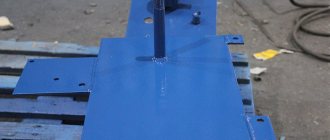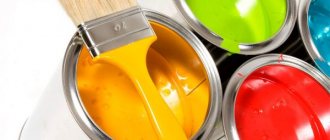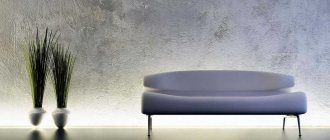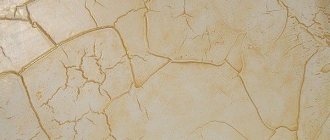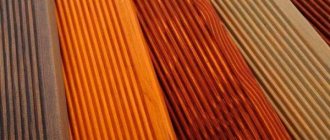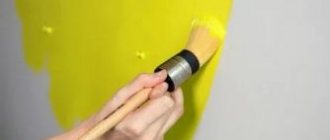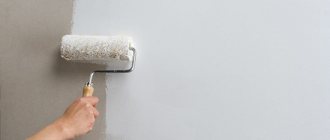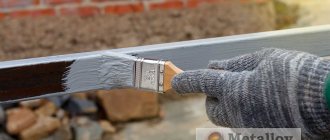What it is?
Hammer paint is ideal for decorating metal products. It gives an aesthetically attractive appearance even to rusty parts. It is difficult to find more effective protection against the harmful effects of moisture and temperature changes.
Hammer paint is based on synthetic resins, as well as metal additives; This is what explains the good resistance to environmental influences. Also added to the hammer substance:
- silicone;
- aluminum powder;
- crushed glass;
- some other factions.
Hammer paint has a remarkable property - it can hide irregularities and flaws on the surface of products. Thanks to the presence of aluminum and silicone, the substance dries and gives the surface an original, aesthetically attractive appearance. At the same time, the resistance of the treated material increases many times.
It is advisable to carry out work at temperatures from 5 to 36 degrees Celsius.
It should be noted that hammer paint, in its technical characteristics, is very similar to a polymer coating, which is much more expensive.
Sometimes unscrupulous manufacturers sell hammer paint under the guise of a polymer composition. At the same time, hammer paint itself is often counterfeited; there is a large percentage of counterfeit products on the market. When purchasing a product, you should not be guided by such a criterion as low price. There is a high probability that such a substance is not a hammer substance. When choosing, pay attention to the manufacturer, make sure the certificates are authentic. Statistics say: more than ¾ of hammer paint on the market is fake.
What affects operation
While aluminum filler is added to other paints to impart gas and water resistance, heat resistance and other properties, in blacksmith paint it primarily performs a decorative function. Performance characteristics depend only on the enamel, which acts as a base.
Powder hammer paints
Powder paint is applied with a spray gun. At the same time, a static charge is imparted to it, while the product to be painted is connected to the pole of a direct current source. As a result, particles are held on the surface due to electrical attraction.
Next, the product enters a special oven where the coating is sintered.
This type of paint is characterized by increased resistance to mechanical stress. But with prolonged use in the open air, its structure is destroyed under the influence of ultraviolet radiation. As a result of the photochemical activity of the pigment, areas of erosion are formed around it. This process is called chalking. A sign is a change in the gloss of the coating. Damaged areas are chipped under mechanical stress, which leads to loss of strength and protective properties of the coating.
Liquid enamel
The performance characteristics of liquid paint are influenced by the following factors:
- Condition of the base. The inscription in the characteristic “enamel against rust” is interpreted by some as a lack of requirements for surface preparation. Preliminary removal of loose oxides will greatly extend the service life of the coating and increase adhesion strength. The material does not adhere well to smooth surfaces. It is sanded before painting.
- No greasy stains on the surface to be painted. This also has a positive effect on grip strength. Particular attention is paid to treating new products with a degreaser: they are often coated with factory lubricant.
- Primer. It is allowed to apply enamel directly to a metal surface. But pre-treatment with a primer will greatly improve its performance characteristics.
Features affecting operation
The surface, covered with hammer enamel, has a texture as if the metal had been hand-chased.
In the manufacture of paintwork materials, alkyd-styrene, acrylic, and epoxy bases combined with silicone oil can be used. The fillers used here are glass and aluminum powders. The liquid paint mixture exhibits high-quality adhesion and, when dried, turns into a coating with high strength values.
Important! Since the composition contains metal powder, the mixtures are characterized by high density, so they are difficult to distribute using a sprayer.
Features of hammer paint
First you need to understand what “hammer paint” is. This category includes paints and varnishes that contain stable polymer resins. They provide a strong bond between the coating and the surface. Painting with such enamel forms a protective layer of high strength, preventing chipping or corrosion.
Hammer effect paint gets its name from the unusual texture it acquires after drying.
A layer of hammer paint, riddled with potholes, could be confused with powder coating, but this is not the case. The components of the paint - aluminum flakes, metal powder, silicone and resin fractions - form a special relief on the surface, reminiscent of the marks that remain on the metal after hammering.
Special abilities
Separately, it is worth mentioning paints with a hammer effect, which are created specifically for painting radiators. Their distinctive feature is their ability to withstand high temperatures. This is usually a heat-resistant enamel with a rust-transforming effect.
Over time, this coating does not fade, does not lose color or peel off. Suitable for use on cast iron and steel structures. Many metal hammer paints for radiators contain diamond chips or diamond shine.
Metal structures are painted not only for a decorative effect. The coating should also serve as protection from environmental influences, high humidity, corrosive processes, and temperature changes. In this case, hammer paints have many advantages.
They are suitable for equipment and parts that are used in outdoor conditions. This paint contains synthetic resins that provide uniform coverage and stable protection. As for the decorative effect, hammer paints retain the original result for many years, which is why they are often used as coatings for fences and gates.
Features of hammer paint
Hammer rust enamel primer, as mentioned earlier, was developed for metal, forged surfaces exposed to regular changes in temperature, impact and chemicals.
It has high rates of creating a barrier against rust, resistance to the harmful effects of natural factors, and coating density. It has high adhesion to materials, can hide defects in the base, and is moisture-repellent.
It has high rates of creating a barrier against rust, resistance to the harmful effects of natural factors, and coating density.
Peculiarities
The characteristics of a hammer coating may vary from manufacturer to manufacturer, but on average they look like this:
- density – 1 kg/l;
- diluted with white spirit solvent;
- the binder composition is alkyd resin;
- residue on the surface – 48% of the volume;
- dries for at least two hours;
- each subsequent layer is applied after five hours;
- stored in containers for up to two years;
- resistance to temperatures up to 80 degrees Celsius;
- gloss level – 66;
- consumption - on average 1 liter per 9-10 square meters (one layer).
Main advantages:
- before applying such paint, the metal surface does not need to be thoroughly cleaned of rust;
- the coating layer tolerates vibration and atmospheric phenomena well;
- the coating effectively protects metals from rust;
- the treated surface does not require repainting for up to ten years;
- the coating resists high temperatures, so this paint and varnish material is often used for painting fireproof cabinets and bank safes;
- hammer substance does not contain toxins that have a detrimental effect on the human body;
- the coloring substance does not have any repulsive pungent odors, it can be used even in rooms where there is not very good ventilation;
- rich variety of shades;
- a layer of hammer coating after application “holds” the color for a long time and does not fade;
- dirt and dust do not stick to the painted surface.
Hammer paint looks very advantageous in appearance; forged metal products look especially impressive.
Remembering the disadvantages of hammer paint, we can mention the high price. A kilogram of such a mixture costs several thousand rubles. In addition, removing old deposits from the surface is only possible with the use of considerable effort and strong solvents.
What are the advantages and disadvantages
The advantages of using this paint are as follows:
- It reliably protects metal products from corrosion.
- Hammer paint does not allow the painted surface to be exposed to too low or high temperatures.
- This product has water-repellent properties.
- The painting procedure is simplified due to the high polymerization speed. This property is especially evident in cases where painting with enamel is carried out using a spray gun.
- When painting, you can apply the product directly to the rust.
Various shades Source gidpokraske.ru
- This enamel forms a durable coating. If you paint a car this way, it will be protected from rust for at least 8 years.
- It contains no substances that can harm people.
- The enamel layer not only has decorative properties, but also protects the surface from moisture, mechanical damage, and temperature influences.
- Using this product ensures cleanliness is maintained.
- Can be used to repair minor surface damage. If there were scratches or small chips, they will not be visible after treatment.
- The paint is highly resistant to vibration. This property is especially important for use in car painting.
- It has no unpleasant odor.
Painting a forged product Source element.ua
However, this product has several disadvantages:
- Hammer paint is expensive.
- High consumption of product during the painting process.
- When using a spray gun, skill is required when working with hammer enamel; you need to know what it is from your own experience.
When painting, you can use different types of tools: brush, roller or spray.
Advantages and disadvantages
The obvious advantages of blacksmith's paint include:
- Effective leveling . Enamel smooths out small defects.
- Rust protection . Protects metal from the formation of iron oxides for 8 years.
- Resistance to high temperatures . A large number of compounds will withstand heating up to + 80 °C.
- Quick drying . The polymerization period for the aerosol application method is no more than 2 hours.
- Decent reliability . Not afraid of vibration, moderate mechanical impacts and hydrometeors.
- Work without lengthy preparation . There is no need to putty or prime the surface. It is enough to remove loose rust.
There were some downsides :
- Low ductility . Where bends and dents develop, small cracks appear where moisture can penetrate.
- Poor compatibility . Without reproaches, they are applied only to coatings with a similar base of binding elements.
Types and manufacturers of hammer enamel
Among the hammer paints presented, several proven brands that have their own characteristics stand out:
- ML 165, which contains substances that are toxic, has good heat resistance and a long service life. Should be applied to a fat-free base;
- NTs 221, has a low price, is applicable only for interior work, it is not allowed to paint corrosion areas. Has good protective properties;
- Delhi is distinguished by its ability to create a durable protective layer against rust. Applied to stainless steel, galvanized steel, non-ferrous metal, cast iron;
- Molotex, good rust protection properties, covers minor surface imperfections, the protective layer perfectly resists environmental influences;
- Prestige hammer paint includes the properties of a primer, coloring agent and decorative coating. Low cost, anti-corrosion properties, stability;
- Hammerite, the most popular and expensive paint, has the best protection properties for items. Hamerite is applied directly to the corrosive lesion; no lengthy surface preparation is required before application. The service life of the coating is up to 8 years.
Drying time
Information about how long the paint takes to dry is given in the instructions for use. On average, this takes 2 hours, after which the coating ceases to be sticky. But the enamel gains maximum strength after 2-3 days.
After painting the car, it is recommended to refrain from operating it during this time.
The influence of these factors depends on the manufacturer. Thus, Dali enamel from NPP Rogneda can be applied to stainless steel and non-ferrous metals without a primer. Hammerite products do not hold up well under these conditions.
Application area
Hammer-type dyes are widely used in the repair and manufacture of homemade metal products, including forged ones. On the street, they are mainly used to decorate fences and other similar structures. Indoors, hammer paint is most often used to process:
- various machinery and equipment;
- metal components in various building structures;
- furniture;
- metal fences;
- pipes;
- ceramic tiles;
- glass products.
Price and reviews of hammer paint
The price of hammer paint depends on many nuances, such as:
- manufacturer;
- volume;
- types of paint, that is, its technical qualities, and so on.
Today, in the assortment of construction stores you can find about one and a half thousand types of hammer paints. The most expensive is Zip-guard Metal Finish Hammered, the cost of this paint ranges from 2600 to 3900 rubles.
Reviews that can easily be found in online stores, next to the product lot or in social networking groups, or on construction thematic forums, almost unanimously point out the clearly inflated cost and the not very high quality of the result obtained with this paint.
In the middle price category are products from the manufacturer Olimp - from 400 to 760 rubles. According to reviews, the paint is good, does not flow, dries quickly, goes on smoothly, but has a very pungent and long-lasting odor.
Panzer metal paint is also available at average prices - from 490 to 780 rubles. Reviews about it are very good, they note the absence of a strong smell, an interesting selection of colors and ease of use with a simple brush. Hammerite paint costs between 2600 and 4500 rubles.
Reviews about it warn about the need to look at where the material was actually manufactured. This paint has recently begun to be produced at Tver enterprises and its quality is several times lower than that of that made in Europe.
The domestic version has a strong odor, and, according to reviews, it smells like ammonia, the paint does not adhere vertically well, runs and drips, the consistency is too liquid, and the waiting time for the layer to dry is very long.
Hammer paint with the laconic name Molotex, produced in Moscow, costs from 7,700 to 7,900 rubles, but this is the price for a “bucket” of 10 liters.
As they write in the reviews, it fully complies with all the technical parameters indicated on the label, clings well, firmly and quickly to the surface, does not smell very strongly and looks no worse than expensive imported analogues.
The only drawback of this product is its large volume, so it is usually purchased by professional builders when ordering the finishing of country houses.
Among aerosols, most reviews highlight inexpensive DECORIX cans with prices ranging from 89 to 210 rubles and the unmemorable, simple design of the can itself.
Those who have used this paint note the thickness of the color of the layers, the low smell, the width of the cans that fits the hand comfortably and the quick drying, as well as its good decorative effect, especially in copper and gold shades.
Another brand that has received a lot of reviews is Dewilux. The price of this paint varies from 467 to 510 rubles per 0.75 liter and it is positioned as a highly decorative paint for interior work, decoration, artistic processing of furniture and restoration work.
Reviews note that the material fully complies with everything stated on its packaging; in addition, they note a weak odor, decorativeness from the first layer and the speed of drying of the paint.
Anti-rust paints with a hammer effect significantly expand the possibilities for decorating an apartment, country house, garden or even a simple summer cottage.
In addition to this undoubtedly important quality, we must not forget about the uniquely high technical characteristics of this paint material, which makes this paint in many cases simply an irreplaceable lifesaver.
For example, when painting garden furniture or frames of gazebos, panels of radiators in a room or window frames. The areas of application are not limited by anything other than necessity and imagination.
Colors
The first hammer paint was not original. She certainly wasn't too boring like her "brethren." External “roughness” put the dye in a separate row. And yet, the gray color was not pleasing to the eye.
The addition of pigments made it possible to diversify the colors of enamels and paints. On the shelves of paint and varnish liquid stores there are white, black, blue, brown, red and other hammer paints.
Hammerite brand products are particularly diverse.
A smooth semi-matte group of dyes, in addition to the listed colors, includes:
- dark brown;
- lavender;
- grey;
- dark grey.
There are other Hammerite paints, including:
- dark blue;
- blue;
- copper;
- light green;
- dark green;
- silvery.
Other manufacturers offer a less extensive palette.
Blacksmith paint can be glossy, matte, or have an intermediate texture - semi-matte. The most popular paints are matte black and glossy white. Gray color, as before, is in demand. Discreet dyes are used to treat various appliances and metal parts of furniture for home and offices.
Surface preparation
Before starting work, the surface should be cleaned or thoroughly wiped. For this, a variety of solvents are used, acetone or white spirit. It is easy to check the degree of readiness of the surface if you run a sheet of thin paper over it - there should be no marks. If there are any, cleaning should be repeated.
Sometimes a metal brush helps a lot, because by cleaning the surface with such a tool, you can significantly increase the adhesion coefficient. The substance adheres well to old paint and varnish material, which does not necessarily need to be cleaned down to the base; it is enough to just remove the “burrs” with sandpaper.
It is also good to coat galvanized and aluminum surfaces, as well as components made of non-ferrous metals, with hammer paint.
The only condition: before work, the materials must be treated with a primer. If hammer paint is applied to wood, it is first treated with an acrylic primer. When it dries, it creates a film on which the coating will adhere to an even, durable layer.
Recommendations for applying paint
The technology of applying paint on Hammerite metal has its own nuances. For example, despite the improved technical characteristics of the composition, it is not applied in rainy or even foggy weather, since the permissible percentage of humidity should not exceed 85.
The permissible percentage of humidity should not exceed 85.
Preparing the metal surface
Depending on the condition of the coating, preliminary preparation of the surface is carried out. Products with visible signs of corrosion require minor mechanical treatment using sandpaper or a wire brush. Next, the base is washed, dried and degreased without coating with a primer.
Coatings with pronounced traces of rust and corrosion are processed using the previous method and covered with a primer. Previously painted surfaces are cleaned, washed, dried and degreased. Previously unpainted substrates are degreased from factory grease and painted. For better adhesion to paint, smooth surfaces are treated with sandpaper or a wire brush.
Products with visible signs of corrosion require minor mechanical treatment using sandpaper or a wire brush.
Preliminary processing
Surface treatment can be done either manually or mechanically using drills with a special attachment or sandblasting machines. Hard-to-reach places in complex structures are processed only by hand.
For surfaces with old traces of destruction, priming is used. Experts recommend using composition number 1 Rust Beater of the same brand (Hammerite). Special solvents are used for degreasing. However, most of them only remove greasy stains. Additionally, the surface can be degreased using a weak 10% solution of acetic acid, which is washed off after treatment and the surface is thoroughly dried.
The priming step improves the adhesion of materials. Each material has its own composition. For example, for ferrous metals, corrosion protection is important, and for non-ferrous metals, good adhesion to paint is important.
Special solvents are used for degreasing.
Applying paint
Hammerite rust enamel adheres well to metal 100 microns thick. This point is taken into account regardless of the application method.
The paint can be applied with a roller, brush, spray gun or using an aerosol bottle of paint (available in the range).
- The paint brush is suitable for treating medium-sized surfaces or for products with complex designs. Before use, the viscosity of the coloring composition should be determined. When thickened, it is diluted with a solvent of the same brand “Brush Cleaner & Tinners” at the rate of 8 parts of paint - 2 parts of solvent.
- The roller is used to paint larger surfaces. Places of corners, bends, turns are treated only with a brush.
- Aerosol cans are convenient for painting small structures.
- When using a spray gun, the main point is the viscosity of the paint. If the ratio of paint and solvent is unbalanced, the surface will be painted unevenly. A thick composition will not come out of the mechanism, and a very diluted one will leave smudges and gaps.
The coating is applied in at least 2 layers, but no more than three. Before applying the next layer, you must wait at least three hours. Premature painting can make the coating unstable and brittle.
How to dilute hammer enamel
Hammer paint is a nitro-enamel with polymers in its composition. Craftsmen often wonder how to dilute this paint composition. Almost any solvent is suitable for this purpose.
You can dilute enamel with the following substances:
- solvent 646;
- xylene;
- solvent;
- gasoline.
It is worth remembering that the quality of the solvent has a direct impact on the hammer coating. Therefore, experts recommend using compounds of the same brand as the paint.
Recommendations
Adviсe:
- When working, you need to use safety glasses, gloves, a respirator, and long sleeves.
- It is recommended to hold the pneumatic spray gun at an angle of 90° to the surface being treated.
- The roller does not need to be dipped in the coloring composition. It is necessary to water the instrument from above.
- Subsequent layers cannot be applied until the previous ones are completely dry.
- Hammer paint contains active components. If you use a foam roller, the material will be destroyed.
- It is not recommended to use brushes to apply enamel to flat surfaces. This tool does not create an even coating. There will be gaps in the part.
- Welding seams are the most vulnerable places. They need to apply a large amount of paint.
- To ensure that the coating is as uniform as possible and that no streaks or spots appear on the prepared surfaces, you need to apply the enamel in a short period of time, without long breaks.
- Since hammer paint has a high density, you need to work with it carefully, paying attention to each place.
Hammer paint has a number of unique properties - strength, resistance to moisture, and temperature changes. To achieve absolute protection of the base from rust formation, it is necessary to follow all the manufacturer’s recommendations and choose the right tool for applying enamel.
Tips for painting
For optimal application, after preparation it is necessary to add nitro 646 or 645 thinner. This substance does not affect the quality of the paint or the appearance of the coating. It is important to stir evenly before application. The prepared mixture can be applied to a metal surface using a roller, brush, special can, or sprayer. The optimal layer thickness should be no more than 100 microns.
Important. If painting is done using a spray can, then according to the rules it must first be shaken well.
When painting large structures that occupy significant areas in size, a special spray gun is used.
In this case, the solvent is added to the mixture in a 2:1 ratio. At ambient temperatures below 20°C, the proportions should be adjusted. When paint is diluted in order to treat car parts from rust, the proportion is maintained as 9:1.
When a surface is painted using a spray gun, the apparatus must be held at a right angle to the surface to be painted. For safety reasons, it is important to use personal protection, which includes: goggles, gloves and a high-quality respirator.
It is also important to follow several basic rules when painting:
- The roller is not dipped in paint, but rather the opposite: a small amount of paint is poured onto the roller.
- Roller covers should not be made of foam rubber, otherwise such material will be destroyed.
- The second one should be applied strictly after the first one is completely dry.
- Metal parts with complex surfaces must be painted with a brush.
- In places where there are welding seams, it is recommended to apply an order of magnitude more composition.
- When applying, it is important not to use a large amount of the composition so that large layers of paint do not occur.
If you follow safety rules, as well as carefully paint all small surfaces and parts, you will create an even, dense layer of paint that will successfully protect the surface from corrosion and aggressive environmental influences.
Material consumption
This indicator depends not only on the characteristics of the composition and manufacturer, but also on other factors. These include:
- climatic conditions;
- the structure of the surface that is being processed;
- the tool used;
- characteristics of the coloring matter.
If painting is done in the heat or the surface being treated is exposed to the sun, the liquid in the preparation will evaporate much faster. As a result, the material consumption will be approximately one and a half times more. Strong winds can cause streaks, unevenness and other defects to form on the surface, which will also lead to increased dye consumption.
An excellent option for saving money is using a spray gun. However, the contractor must have sufficient experience, otherwise an attempt to save money will entail additional problems. The reason for this may be:
- weathering of the product;
- uneven processing;
- drips.
Brushes absorb mixtures very well, so when using them, paint consumption will be greater. This is especially true for nylon-wrapped devices. The best option, according to experts, is a rough roller.
Regardless of the application technology and type of paint, the surface must first be cleaned. Only in this case will the coating be uniform, reliable and durable.
How to paint
When you need to use hammer paint on metal, how to paint it will be discussed below.
Before starting work, the surface must be cleaned. At the same time, dirt, rust stains, and remnants of old paint are removed. It is usually acceptable to paint over rust, but removing it will increase adhesion to the metal.
After this, remove dust and degrease with white spirit or a similar product.
Shake the composition before use. This is necessary to ensure that the particles are distributed evenly. The liquid will thicken quickly. Therefore, painting must be done as quickly as possible. If it is necessary to add hammer enamel, this is done in advance.
When working, you need to use personal protective equipment Source hausnet.ru
It is recommended that the surface on which work is carried out be in a horizontal position. At the same time, no drips will form during the painting process.
It is recommended to use a primer. This is not necessary, but it will increase the adhesion force to the metal.
In order for the coating to be of high quality, it is necessary to have two or three layers of paint. After applying the first layer, you need to wait at least two hours until it begins to dry. Then you will need to paint again.
Complete drying time depends on the brand of enamel used. In most cases, its layer will be completely ready in three days.
When using a roller, you should avoid those made of foam rubber. Enamel can easily corrode this material. For hammer paint, you need to choose one that is made of fur.
It is necessary to choose the right brush Source pechiexpert.ru
Manufacturers and reviews
Hammer compounds of domestic brands are often not inferior in their characteristics to their foreign analogues, although they are noticeably cheaper in price. At the same time, the world's most famous manufacturer of hammer paint is the Hammerite company. This composition can even treat unprepared surfaces. Such paint can change even heavily rusted metal products beyond recognition. At the same time, Hammerite coating provides reliable protection for any material.
This paint dries quickly, is easy to prepare with the addition of a solvent, and is comfortable to work with. Before starting work, it is still recommended to apply a layer of primer to the surface to be treated - this will increase strength and provide an additional guarantee that the coating layer will be more reliable.
The permissible air humidity when working with Hammerite is 80%, the temperature can be from 8 to 26 degrees Celsius. It is forbidden to work with such a composition outdoors when the weather is rainy or foggy.
The paint “sets” quite quickly - two hours is enough for this, but final drying occurs only after two weeks. To obtain the desired effect, several layers (up to 5) are usually applied. The time interval between application of layers is 6-8 hours.
If you want to improve the reliability of the coating, do not neglect its pre-treatment. It is recommended to use the same brand of solvent whenever possible.
Hammer paint is quite popular and in demand; you can buy it in any specialized store. Reviews about it are positive; this composition is especially praised by summer residents who process fences around houses, various metal parts, and garden tools. Everyone notes the absence of odor in this composition and its good adhesion.
Many people like the hammer stamping that appears on the product after the paint dries.
For a clear example of using hammer paint, see the following video.
Varieties
There are the following types of hammer paint:
- ML-165. Produced on an alkyd-styrene base. Characterized by good adhesion and heat resistance (withstands up to +130°C). Suitable for painting any surfaces. Disadvantages include a negative impact on the respiratory system during the application process, as well as a high fire hazard, so precautions must be taken.
- NTs-221. Designed for decorative purposes, ideal for external and internal repair work, and has a fairly low price. However, it does not protect painted products from corrosion or heat.
- EP-1323 ME. Epoxy product 2 in 1 (that is, primer and paint). Excellent metal paint with anti-corrosion effect and thermal properties. Used for painting construction equipment, cars, gates, doors, fences. Can be applied to rust and cast iron products.
- Hammerite. A very expensive and high-quality coloring agent made in England. Made on the basis of alkyd resins and silicone additives, thanks to which the protective effect is significantly enhanced. It is not recommended to apply the composition using a spray gun, since this device will not provide the desired effect and will also increase the consumption of the dye.
Making hammer paint at home
Some craftsmen have gotten used to making hammer enamel themselves. To do this you need to prepare the following ingredients:
- varnish (UVL-1) – 96.8%;
- aluminum shavings – 3-6% – ensures the creation of a hammer effect;
- soot – 0.2-0.5%. This component gives the coating a dark tint;
- silicone oil – forms relief.
Enamel ml-165
The first three components are mixed until the chips stop floating. To change the shade, add colored enamel (no more than 30% of the total mass of the composition). Next, add a few drops of silicone oil. Painting should begin immediately after production. Most often, homemade hammer compounds are used for painting vehicles.
